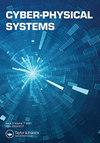A rail detection algorithm for accurate recognition of train fuzzy video
Q2 Engineering
引用次数: 1
Abstract
ABSTRACT The research follows the mainstream physics and network system architecture. Aiming at the problem of poor data processing ability and poor robustness of traditional trajectory detection algorithms, a trajectory detection method that can be accurately extracted from the fuzzy video of a locomotive is proposed. Firstly, in order to ensure the accuracy of rail detection of trains in complex environments and improve the safety of driverless driving, the video image captured by on-board camera is stored as RGB video frame set, and then processed as single-channel greyscale image carrier set; Secondly, after the initial colour and brightness treatment, the redundant and useless noise features in the greyscale image carrier set still exist. After secondary Gaussian filtering and de-noising, canny operator is used to detect the track edge details of interest; Finally, the rail area is taken as the interested target for Hough line detection, the background subtraction method of adaptive mixed Gaussian background modelling is introduced, the structure element function and the morphologyEx theory of morphological transformation function are introduced, and the left and right tracks are fitted after the calculation and judgement of pixel coordinates. Algorithm for visual tracking experiments show that, rail detection algorithm has already meet need to detect rails in low-quality videos recorded by the on-board cameras of different models of trains at different speed. It not only can process large quantity of data from the on-board camera videos in real time, but also can accurately detect the target rails adaptively where rail conditions are complex with obstructive objects, which shows that this algorithm has very robust performance.一种用于列车模糊视频准确识别的轨道检测算法
本研究遵循主流物理和网络系统架构。针对传统轨迹检测算法数据处理能力差、鲁棒性差的问题,提出了一种能够准确提取机车模糊视频的轨迹检测方法。首先,为了保证复杂环境下列车轨道检测的准确性,提高无人驾驶的安全性,将车载摄像头采集的视频图像存储为RGB视频帧集,然后处理为单通道灰度图像载体集;其次,经过初始的色彩和亮度处理后,灰度图像载体集中仍然存在冗余和无用的噪声特征。经过二次高斯滤波和去噪后,使用canny算子检测感兴趣的轨迹边缘细节;最后,以轨道区域为感兴趣目标进行霍夫线检测,引入自适应混合高斯背景建模的背景相减方法,引入结构元函数和形态变换函数的morphologyEx理论,计算判断像素坐标后进行左右轨道拟合。算法视觉跟踪实验表明,轨道检测算法已经满足了对不同型号、不同速度列车的车载摄像机录制的低质量视频进行轨道检测的需求。该算法不仅能够实时处理车载摄像机视频中的大量数据,而且能够在轨道条件复杂且存在障碍物的情况下,自适应准确检测出目标轨道,具有很强的鲁棒性。
本文章由计算机程序翻译,如有差异,请以英文原文为准。
求助全文
约1分钟内获得全文
求助全文

 求助内容:
求助内容: 应助结果提醒方式:
应助结果提醒方式:


